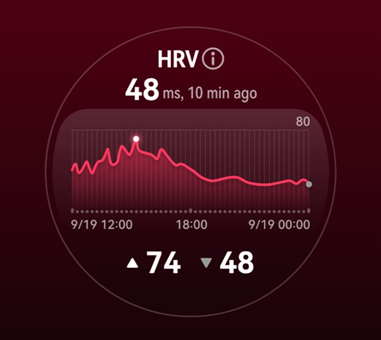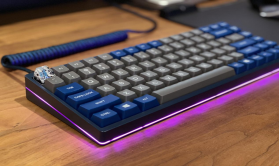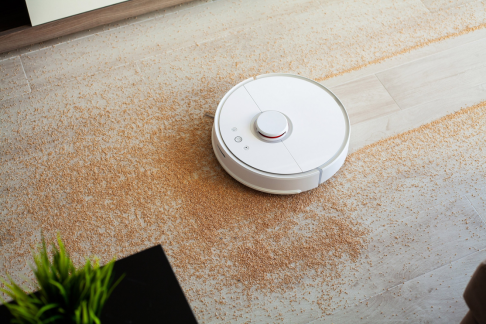How Do Smartwatches Track Your Health?
Smartwatches help consumers monitor their health by providing real-time data and tailored insights. These watches use built-in sensors and software to measure a number of physical and physiological variables. Whether you're monitoring your heart rate, tracking your sleep habits, or counting your steps, your wristwatch gives information to help you make better lifestyle choices. It serves as a daily guide, helping users stay aware of how their bodies react to stress, activity, and relaxation. Understanding what smartwatches track and how they operate enables consumers to make sense of the numbers displayed. This tutorial describes the most popular health metrics and how your smartwatch measures them.

What Health Data Do Smartwatches Track?
Heart Rate and Heart-Related Metrics
Smartwatches measure heart rate using optical sensors that emit light into the skin to detect blood flow. This data displays the beats per minute (BPM), resting heart rate, and heart rate variability (HRV). Some devices can detect abnormal beats or take manual ECG readings to look for indicators of atrial fibrillation. Continuous heart rate monitoring allows people to better understand how their bodies respond to exercise, stress, and recuperation. During exercises, the watch categorizes heart rate data into zones, such as fat burn or peak cardio, allowing users to train effectively. Over time, this data indicates cardiovascular fitness trends, allowing people to improve their performance and lower their health risks. A regularly high resting heart rate, for example, may lead a user to seek medical attention.
Sleep Patterns and Daily Activity
Smartwatches measure three types of sleep: light, deep, and REM. These insights assist users in understanding how well they sleep and how it influences recovery. Watches display overall sleep time, time awake, and consistency throughout the week. Many types detect interruptions and provide a sleep score every morning. In addition to sleep, smartwatches track everyday activities such as active minutes, calorie burn, and movement reminders. These indicators show total energy output and advise users to limit their inactive behavior. By connecting sleep patterns to activity levels, users may understand how rest and movement interact. Better sleep enhances workout performance, whereas active days might lead to deeper slumber, resulting in a beneficial health feedback loop.

Movement, Steps, and Fitness Levels
Movement monitoring begins with simple step counts and progresses to complex fitness measurements. Accelerometers in smartwatches identify periods of walking, running, and standing throughout the day. Most models compute distance traveled and calories burned using steps, heart rate, and body measurements. Users can use step targets or standing alarms to keep active while working long hours at a desk. Some watches assess VO2 max, an indicator of aerobic fitness, and provide fitness age ratings. Many even provide training insights—like explaining what is a tempo run is—to help users understand different workout types. Together, these features promote constant activity and allow users to measure their progress. Whether you're walking more for overall health or preparing for a race, the data provides motivation and accountability with each step you take.
How Do Smartwatches Measure These Metrics?
Sensors That Detect Body Signals
Smartwatches rely on a variety of sensors to collect biometric information. Optical heart rate monitors measure pulse by sensing changes in blood volume using light. Some types incorporate electrical sensors for ECG readings, which are useful for detecting abnormal beats. Skin temperature sensors detect changes, which may indicate stress or disease. Blood oxygen sensors (SpO2) measure how efficiently the body provides oxygen, particularly during sleep or altitude training. Newer watches may also have bioimpedance sensors to determine hydration and body composition. These techniques work together to create a consistent picture of physical well-being. The more modern the sensors, the more precise and useful the results. Smartwatches can not diagnose illnesses, but they do provide users with information that will help them pay closer attention to their health.
Motion Tracking and Movement Detection
Smartwatches use accelerometers, gyroscopes, and, in some cases, altimeters to detect movement. These components detect changes in direction, movement, and elevation. The accelerometer detects motion patterns to count steps or determine if the user is walking, running, or standing still. The gyroscope detects rotation and helps recognize sports such as cycling and swimming. An altimeter measures elevation changes, making it handy for stair climbing and trail jogging. This combination enables the watch to automatically track various forms of physical activity throughout the day. It also recognizes workouts, breaks, and variations in pace and intensity. These sensors generate a movement profile without requiring operator input. For users, this translates to more accurate statistics and fewer missed sessions in the activity log.
Software and Algorithms That Turn Data Into Insights
Sensors collect raw data, but software transforms it into useful health information. Algorithms analyze heart rate, movement, and sleep data to produce concise summaries such as activity rings, stress levels, and recovery scores. Apps like HUAWEI Health aggregate this data into charts and trends that users can readily track. Machine learning enables these systems to change over time, providing wiser suggestions as more data is collected. For example, if you frequently sleep less before strenuous exercises, your watch may propose decreasing the intensity. These algorithms stress accuracy and usability, making the experience more personal. With the correct software, your smartwatch may function as a daily health advisor on your wrist, rather than just a tracker.
Conclusion
Smartwatches monitor health by combining sensor data, motion detection, and smart software to provide easy-to-follow information. They track heart rate, activity, sleep, and total movement to determine how the body reacts to everyday stress, exercise, and relaxation. Users may improve their health and develop persistent behaviors by knowing what is recorded and how it is measured. While these gadgets do not replace medical advice, they do provide an important layer of awareness. Smartwatches provide real-time input that promotes everyday well-being, whether for casual consumers or devoted athletes. As technology progresses, smartwatches evolve from basic step counters to sophisticated tools that help individuals stay informed, active, and on track with their health objectives.
Copyright © 2023 guideforests.com. All rights reserved.







